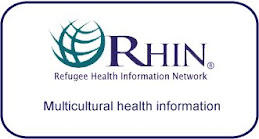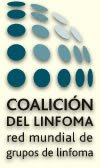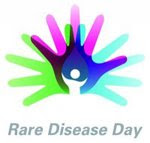
Background and definitions
Prescription medication use is widespread, complex, and increasingly risky. Clinicians have access to an armamentarium of more than 10,000 prescription medications, and nearly one-third of adults in the United States take 5 or more medications. Advances in clinical therapeutics have undoubtedly resulted in major improvements in health for patients with many diseases, but these benefits have also been accompanied by increased risks. An adverse drug event (ADE) is defined as harm experienced by a patient as a result of exposure to a medication, and ADEs account for nearly 700,000 emergency department visits and 100,000hospitalizations each year. ADEs affect nearly 5% of hospitalized patients, making them one of the most common types of inpatient errors; ambulatory patients may experience ADEs at even higher rates. Transitions in care are also a well-documented source of preventable harm related to medications.
As with the more general term adverse event, the occurrence of an ADE does not necessarily indicate an error or poor quality care. A medication error refers to an error (of commission or omission) at any step along the pathway that begins when a clinician prescribes a medication and ends when the patient actually receives the medication. Preventable adverse drug events result from a medication error that reaches the patient and causes any degree of harm. It is generally estimated that about half of ADEs are preventable. Medication errors that do not cause any harm—either because they are intercepted before reaching the patient, or by luck—are often called potential ADEs. An ameliorable ADE is one in which the patient experienced harm from a medication that, while not completely preventable, could have been mitigated. Finally, a certain percentage of patients will experience ADEs even when medications are prescribed and administered appropriately; these are considered adverse drug reactions or non-preventable ADEs (and are popularly known as side effects).
For example, the intravenous anticoagulant heparin is considered one of the highest-risk medications used in the inpatient setting. Safe use of heparin requires weight-based dosing and frequent monitoring of tests of the blood's clotting ability, in order to avoid either bleeding complications (if the dose is too high) or clotting risks (if the dose is inadequate). If a clinician prescribes an incorrect dose of heparin, that would be considered a medication error (even if a pharmacist detected the mistake before the dose was dispensed). If the incorrect dose was dispensed and administered, but no clinical consequences occurred, that would be a potential ADE. If an excessively large dose was administered and was detected by abnormal lab results, but the patient experienced a bleeding complication due to clinicians failing to respond appropriately, it would be considered an ameliorable ADE (that is, earlier detection could have reduced the level of harm the patient experienced).
Risk factors for adverse drug events
There are patient-specific and drug-specific risk factors for ADEs. Polypharmacy—taking more medications than clinically indicated—is likely the strongest risk factor for ADEs. Elderly patients, who take more medications and are more vulnerable to specific medication adverse effects, are particularly vulnerable to ADEs. Pediatric patients are also at elevated risk, particularly when hospitalized, since many medications for children must be dosed according to their weight. Other well-documented patient-specific risk factors include limited health literacy and numeracy (the ability to use arithmetic operations for daily tasks), both of which are independently associated with ADE risk. It is important to note that in ambulatory care, patient-level risk factors are probably an under-recognized source of ADEs. Studies have shown that both caregivers (including parents of sick children) and patients themselves commit medication administration errors at surprisingly high rates.
The Institute for Safe Medication Practices maintains a list of high-alert medications—medications that can cause significant patient harm if used in error. These include medications that have dangerous adverse effects, but also include look-alike, sound-alike medications, which have similar names and physical appearance but completely different pharmaceutical properties. The Beers criteria, which define certain classes of medications as potentially inappropriate for geriatric patients, have traditionally been used to assess medication safety. However, the newer STOPP criteria (Screening Tool of older Person's inappropriate Prescriptions) have been shown to more accurately predict ADEs than the Beers criteria, and are therefore likely a better measure of prescribing safety in the elderly.
Though there are specific types of medications for which the harm generally outweighs the benefits, such as benzodiazepine sedatives in elderly patients, it is now clear that most ADEs are caused by commonly used medications that have risks, but offer significant benefits if used properly. These medications include antidiabetic agents (e.g., insulin), oral anticoagulants (e.g., warfarin), and antiplatelet agents (such as aspirin and clopidogrel). Together, these four medications—which are not considered inappropriate by the Beers criteria—account for nearly 50% of emergency department visits for ADEs in Medicare patients. Focusing on improving prescribing safety for these necessary but higher-risk medications may reduce the large burden of ADEs in the elderly to a greater extent than focusing on use of potentially inappropriate classes of medications.
Prevention of adverse drug events
The pathway between a clinician's decision to prescribe a medication and the patient actually receiving the medication consists of several steps:
- Ordering: the clinician must select the appropriate medication and the dose and frequency at which it is to be administered.
- Transcribing: in a paper-based system, an intermediary (a clerk in the hospital setting, or a pharmacist or pharmacy technician in the outpatient setting) must read and interpret the prescription correctly.
- Dispensing: the pharmacist must check for drug–drug interactions and allergies, then release the appropriate quantity of the medication in the correct form.
- Administration: the correct medication must be supplied to the correct patient at the correct time. In the hospital, this is generally a nurse's responsibility, but in ambulatory care this is the responsibility of patients or caregivers.
While the majority of errors likely occur at the prescribing and transcribing stages, medication administration errors are also quite common in both inpatient and outpatient settings. Preventing medication errors requires specific steps to ensure safety at each stage of the pathway (Table).
Table. Strategies to prevent adverse drug events
| STAGE | SAFETY STRATEGY |
|---|---|
| Prescribing |
|
| Transcribing |
|
| Dispensing |
|
| Administration |
|
Although each of the strategies enumerated in the Table can prevent ADEs when used individually, fundamentally, improving medication safety cannot be divorced from the overall goal of reducing preventable harm from all causes. Analysis of serious medication errors invariably reveals other underlying system flaws, such as human factors engineering issues and impaired safety culture, that allowed individual prescribing or administration errors to reach the patient and cause serious harm. Integration of information technology solutions (including computerized provider order entry and barcode medication administration) into "closed-loop" medication systems holds great promise for improving medication safety in hospitals, but the potential for error will remain unless these systems are carefully implemented and these larger issues are addressed.
Current Context
Preventing ADEs is a major priority for accrediting and regulatory agencies. The Joint Commission has named improving medication safety as a National Patient Safety Goal for both hospitals and ambulatory clinics, and more recently, the Partnership for Patients has included ADE prevention as one of its key goals for improving patient safety. The Partnership for Patients has set a goal of reducing preventable ADEs in hospitalized patients by 50% by 2013, estimating that more than 800,000 ADEs could be prevented if this goal is met.
What's New in Medication Errors on AHRQ PSNet
STUDY
Medicines management support to older people: understanding the context of systems failure.
Rogers S, Martin G, Rai G. BMJ Open. 2014;4:e005302.
 STUDY
STUDY
Characteristics associated with postdischarge medication errors.
Mixon AS, Myers AP, Leak CL, et al. Mayo Clin Proc. 2014 Jul 3; [Epub ahead of print].
 STUDY
STUDY
A comparison of the effects of different typographical methods on the recognizability of printed drug names.
Or CKL, Wang H. Drug Saf. 2014;37:351-359.
 COMMENTARY
COMMENTARY
Nearing zero...reducing grade C medication errors.
Cockerham J, Figueroa-Altmann A, Foxen C, Paffett C, Sullivan A, Wellner J. Nurs Manage. 2014;45:26-31.
 STUDY
STUDY
ASHP national survey of pharmacy practice in hospital settings: prescribing and transcribing—2013.
Pedersen CA, Schneider PJ, Scheckelhoff DJ. Am J Health Syst Pharm. 2014;71:924-942.
 STUDY
STUDY
Identifying facilitators and barriers for patient safety in a medicine label design system using patient simulation and interviews.
Dieckmann P, Clemmensen MH, Sørensen TK, Kunstek P, Hellebek A. J Patient Saf. 2014 May 14; [Epub ahead of print].
 STUDY
STUDY
Cost-effectiveness of a computerized provider order entry system in improving medication safety ambulatory care.
Forrester SH, Hepp Z, Roth JA, Wirtz HS, Devine EB. Value Health. 2014;17:340-349.

Medicines management support to older people: understanding the context of systems failure.
Rogers S, Martin G, Rai G. BMJ Open. 2014;4:e005302.
Characteristics associated with postdischarge medication errors.
Mixon AS, Myers AP, Leak CL, et al. Mayo Clin Proc. 2014 Jul 3; [Epub ahead of print].
A comparison of the effects of different typographical methods on the recognizability of printed drug names.
Or CKL, Wang H. Drug Saf. 2014;37:351-359.
Nearing zero...reducing grade C medication errors.
Cockerham J, Figueroa-Altmann A, Foxen C, Paffett C, Sullivan A, Wellner J. Nurs Manage. 2014;45:26-31.
ASHP national survey of pharmacy practice in hospital settings: prescribing and transcribing—2013.
Pedersen CA, Schneider PJ, Scheckelhoff DJ. Am J Health Syst Pharm. 2014;71:924-942.
Identifying facilitators and barriers for patient safety in a medicine label design system using patient simulation and interviews.
Dieckmann P, Clemmensen MH, Sørensen TK, Kunstek P, Hellebek A. J Patient Saf. 2014 May 14; [Epub ahead of print].
Cost-effectiveness of a computerized provider order entry system in improving medication safety ambulatory care.
Forrester SH, Hepp Z, Roth JA, Wirtz HS, Devine EB. Value Health. 2014;17:340-349.
Editor's Picks for Medication Errors



 JOURNAL ARTICLE
JOURNAL ARTICLE Medication use leading to emergency department visits for adverse drug events in older adults.
Medication use leading to emergency department visits for adverse drug events in older adults. 
Budnitz DS, Shehab N, Kegler SR, Richards CL. Ann Intern Med. 2007;147:755-765.
 Effect of bar-code technology on the safety of medication administration.
Effect of bar-code technology on the safety of medication administration. 
Poon EG, Keohane CA, Yoon CS, et al. N Engl J Med. 2010;362:1698-1707.
 Adverse drug events in U.S. adult ambulatory medical care.
Adverse drug events in U.S. adult ambulatory medical care. 
Sarkar U, López A, Maselli JH, Gonzales R. Health Serv Res. 2011;46:1517-1533.
 Medication errors and adverse drug events in pediatric inpatients.
Medication errors and adverse drug events in pediatric inpatients. 
Kaushal R, Bates DW, Landrigan C, et al. JAMA. 2001;285:2114-2120.
 The incidence and severity of adverse events affecting patients after discharge from the hospital.
The incidence and severity of adverse events affecting patients after discharge from the hospital. 
Forster AJ, Murff HJ, Peterson JF, Gandhi TK, Bates DW. Ann Intern Med. 2003;138:161-167.
 Adverse drug events in ambulatory care.
Adverse drug events in ambulatory care. 
Gandhi TK, Weingart SN, Borus J, et al. N Engl J Med. 2003;348:1556-1564.
 Incidence and preventability of adverse drug events in hospitalized patients.
Incidence and preventability of adverse drug events in hospitalized patients. 
Bates DW, Leape LL, Petrycki S. J Gen Intern Med. 1993;8:289-294.
 Incidence of adverse drug events and potential adverse drug events: implications for prevention.
Incidence of adverse drug events and potential adverse drug events: implications for prevention. 
Bates DW, Cullen DJ, Laird N, et al; ADE Prevention Group. JAMA. 1995;274:29-34.
 Potentially inappropriate medications defined by STOPP criteria and the risk of adverse drug events in older hospitalized patients.
Potentially inappropriate medications defined by STOPP criteria and the risk of adverse drug events in older hospitalized patients. 
Hamilton H, Gallagher P, Ryan C, Byrne S, O’Mahony D. Arch Intern Med. 2011;171:1013-1019.

 LEGISLATION/REGULATION
LEGISLATION/REGULATION Preventing pediatric medication errors.
Preventing pediatric medication errors.
Sentinel Event Alert. April 11, 2008;(39):1-5.

 BOOK/REPORT
BOOK/REPORT Preventing Medication Errors: Quality Chasm Series.
Preventing Medication Errors: Quality Chasm Series. 
Committee on Identifying and Preventing Medication Errors, Aspden P, Wolcott J, Bootman JL, Cronenwett LR, eds. Washington, DC: The National Academies Press; 2007.
Medication Overdose.
Rainu Kaushal, MD, MPH. AHRQ WebM&M [serial online]. April 2003
 40 of K.
40 of K.
Timothy S. Lesar, PharmD. AHRQ WebM&M [serial online]. November 2003
 Bad Writing, Wrong Medication.
Bad Writing, Wrong Medication.
Beth Devine, PharmD, MBA, PhD. AHRQ WebM&M [serial online]. April 2010
Rainu Kaushal, MD, MPH. AHRQ WebM&M [serial online]. April 2003
Timothy S. Lesar, PharmD. AHRQ WebM&M [serial online]. November 2003
Beth Devine, PharmD, MBA, PhD. AHRQ WebM&M [serial online]. April 2010
Budnitz DS, Shehab N, Kegler SR, Richards CL. Ann Intern Med. 2007;147:755-765.
Poon EG, Keohane CA, Yoon CS, et al. N Engl J Med. 2010;362:1698-1707.
Sarkar U, López A, Maselli JH, Gonzales R. Health Serv Res. 2011;46:1517-1533.
Kaushal R, Bates DW, Landrigan C, et al. JAMA. 2001;285:2114-2120.
Forster AJ, Murff HJ, Peterson JF, Gandhi TK, Bates DW. Ann Intern Med. 2003;138:161-167.
Gandhi TK, Weingart SN, Borus J, et al. N Engl J Med. 2003;348:1556-1564.
Bates DW, Leape LL, Petrycki S. J Gen Intern Med. 1993;8:289-294.
Bates DW, Cullen DJ, Laird N, et al; ADE Prevention Group. JAMA. 1995;274:29-34.
Hamilton H, Gallagher P, Ryan C, Byrne S, O’Mahony D. Arch Intern Med. 2011;171:1013-1019.
Sentinel Event Alert. April 11, 2008;(39):1-5.
Committee on Identifying and Preventing Medication Errors, Aspden P, Wolcott J, Bootman JL, Cronenwett LR, eds. Washington, DC: The National Academies Press; 2007.






























No hay comentarios:
Publicar un comentario